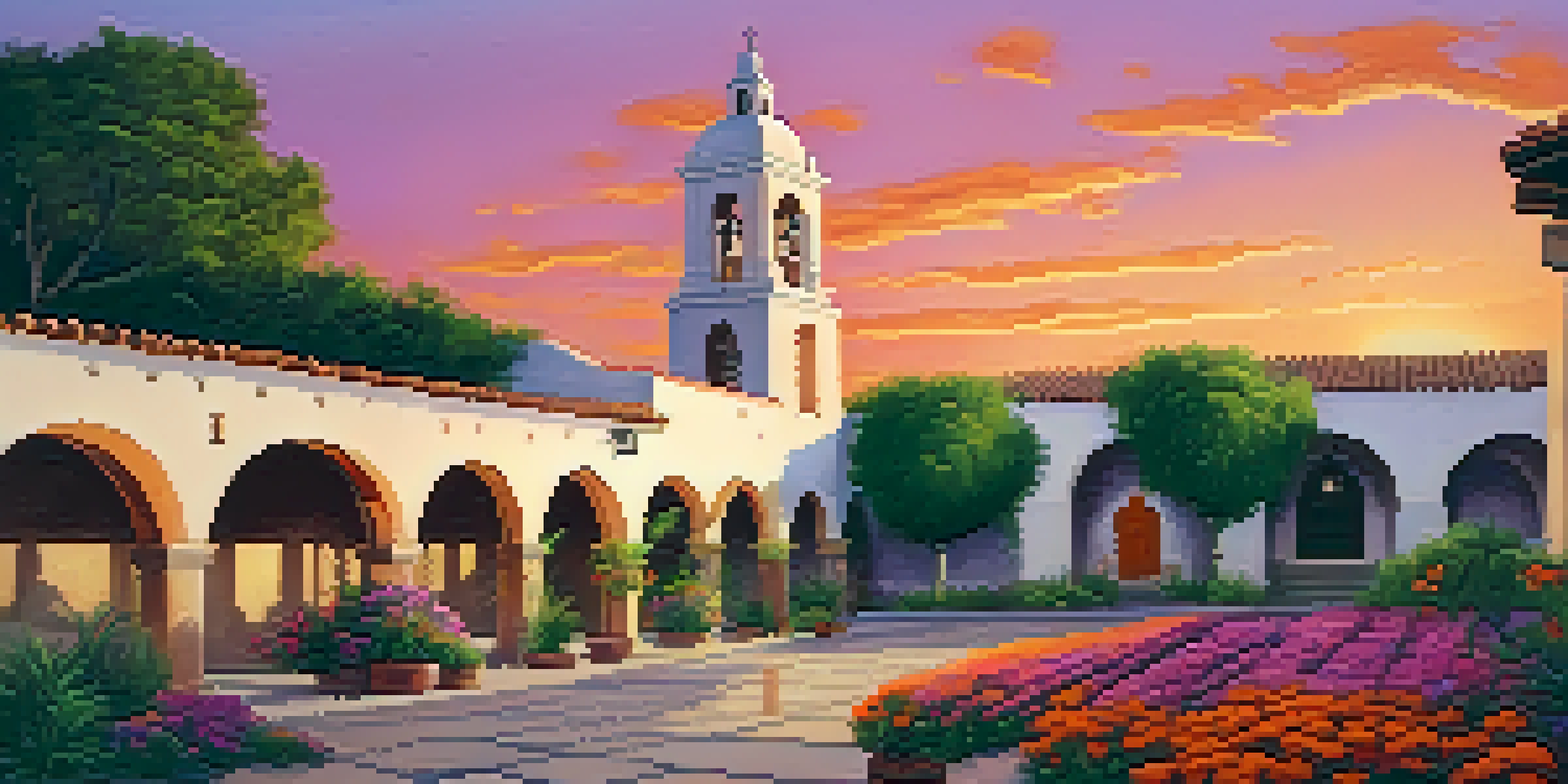Architectural Styles of California's Historic Missions

Introduction to California's Historic Missions
California's historic missions are not just religious sites; they are architectural treasures that reflect the diverse cultural influences of the region. Established during the Spanish colonization in the 18th and 19th centuries, these missions served as hubs for settlement and agriculture. Each mission tells a unique story through its design, showcasing a blend of Spanish, Native American, and later American influences.
Spanish Colonial Architecture: The Foundation
The primary architectural style of California's missions is Spanish Colonial, characterized by its adobe walls, tile roofs, and arched doorways. This style was influenced by the architecture of Spain, particularly the Mediterranean regions. The use of local materials, like adobe bricks made from clay and straw, not only provided insulation but also gave the missions a rustic charm that has endured through the centuries.
California's Missions: Cultural Hubs
California's historic missions are architectural treasures that reflect the diverse cultural influences of Spanish colonization and indigenous practices.
Mission San Diego de Alcalá: A Case Study
Mission San Diego de Alcalá, founded in 1769, is often regarded as the first of California's missions. Its architecture exemplifies the Spanish Colonial style with its simple, yet elegant, façade and iconic bell tower. The mission's design includes a central courtyard and religious symbols that reflect its role as a spiritual center, illustrating how architecture can serve both functional and aesthetic purposes.
Baroque Influence: Decorative Elements
While the overall structure of the missions follows the Spanish Colonial style, many incorporate Baroque elements that add a layer of grandeur. This can be seen in intricately designed altars, elaborate frescoes, and decorative tiles. The combination of these styles creates a visually stunning effect, inviting visitors to appreciate the artistry and devotion that went into their construction.
Architectural Styles: A Blend
The missions showcase a unique blend of Spanish Colonial and Baroque styles, enhanced by Native American techniques, creating visually stunning structures.
Native American Influence: Blending Cultures
The design of California's missions also reflects the influence of Native American architecture. Many missions incorporated local building techniques and materials, seamlessly blending indigenous styles with European designs. This fusion not only made the structures more functional in the local climate but also symbolized the cultural exchange that occurred during this period.
American Adaptations: 19th Century Changes
As California transitioned to American control in the 19th century, many missions underwent renovations and adaptations. The architectural styles began to reflect a more American sensibility, with influences from the Gothic Revival and other popular movements of the time. These changes often included modifications to the interiors and exteriors, showcasing a shift in both purpose and aesthetic.
Preservation of Historical Significance
Ongoing preservation efforts ensure that California's missions remain historical landmarks, allowing future generations to appreciate their beauty and cultural heritage.
Preservation Efforts: Keeping History Alive
Today, many of California's missions are preserved as historical landmarks, attracting millions of visitors each year. Preservation efforts focus on maintaining the original architectural styles while also adapting the missions for modern use. This balance ensures that future generations can appreciate the beauty and historical significance of these structures, keeping the stories they tell alive.
Conclusion: The Legacy of California's Missions
The architectural styles of California's historic missions are a testament to the state's rich cultural heritage. Each mission, with its unique design and history, contributes to a broader narrative about the blending of cultures and influences over time. Visiting these missions provides an opportunity not only to admire their beauty but also to reflect on the complex history that shaped California.